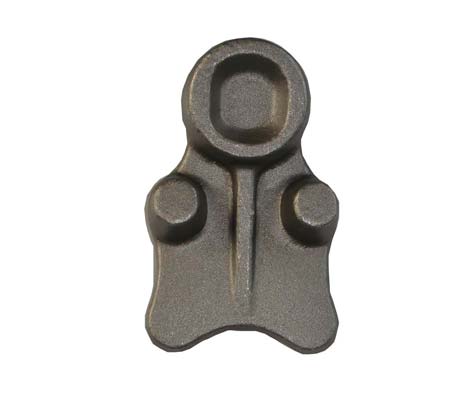- Contact Innally, Let you purchase forgings in China more favorable prices, products more assured!
- Hotline:+(86)15038323776 Email:innally@innally.com
How to check the quality of agricultural machinery forgings?
- Category: Mechanical forgings for metalworking, Steel forgings
- |
- Date: 12/10/2023
the quality inspection of agricultural machinery forgings is an important link to ensure its performance and quality, which needs to be comprehensively tested and evaluated by a variety of methods and means. At the same time, the establishment of strict quality control system and standardized operation process, and constantly improve the level of testing technology and management capabilities are also important guarantees to improve the quality of agricultural machinery forgings.
Product Details
Quality inspection of agricultural machinery forgings is an important link to ensure its performance and quality. Quality testing includes many aspects, such as size testing, appearance testing, material testing, non-destructive testing and so on. Below we will introduce these detection methods and precautions in detail.
First, size detection
Size inspection is the basic link of quality inspection, by measuring the size and shape of the forging, you can judge whether it meets the design requirements. Size detection is usually measured by calipers, micrometers, gauges and other tools, for some complex shapes of forgings, can also be measured by precision instruments such as coordinate measuring instrument.
Second, appearance detection
Appearance inspection is an important step to check the surface defects of forgings, such as cracks, pores, inclusions, etc. The appearance inspection can be carried out by visual inspection, magnifying glass inspection, etc. For some small defects, magnetic particle detection, ultrasonic detection and other methods can also be used for detection.

Third, material testing
Material testing is an important link to ensure that forging materials meet the requirements, which can be carried out by chemical analysis, metallographic analysis, mechanical property testing and other ways. Chemical analysis can determine whether the chemical composition of forging materials meets the requirements; Metallographic analysis can observe whether the metallographic structure inside the forging is normal. The mechanical property test can test whether the strength, toughness, hardness and other indicators of forging meet the requirements.
- Non-destructive testing
Non-destructive testing refers to the use of ray, ultrasonic, magnetic powder and other technologies to detect internal defects in forgings without damaging the forgings. Non-destructive testing is of great significance for finding cracks, pores and other defects inside forgings, which can effectively improve the quality and reliability of forgings.
- Precautions
In the process of quality inspection, the following points need to be noted:
The accuracy and reliability of testing tools must be guaranteed to improve the accuracy and credibility of testing results.
For some small defects, it is necessary to carry out fine detection and treatment to avoid omission or misjudgment.
Non-destructive testing requires a certain amount of professional knowledge and skills, operators must be trained and hold the appropriate qualification certificate.
Quality test results must be recorded, and a complete test file must be established in order to trace and analyze quality problems.
In short, the quality inspection of agricultural machinery forgings is an important link to ensure its performance and quality, which needs to be comprehensively tested and evaluated by a variety of methods and means. At the same time, the establishment of strict quality control system and standardized operation process, and constantly improve the level of testing technology and management capabilities are also important guarantees to improve the quality of agricultural machinery forgings.
nannan
INNALLY website editing, to provide you with forging related information
Related Products
Search
Forging center
- Steel forgings
- Aluminium alloy forging
- Titanium alloy forging
- Stainless steel forging
- Copper forging
- Automotive forgings
- Locomotive forging
- Bicycle forgings
- Motorcycle forging
- Rigging and fasteners
- Bearing forging
- Electric power fittings
- Marine forging
- Mechanical forgings for metalworking
- Mining machinery forgings
- Marine engineering forgings
- Construction machinery forgings
Popular product

© 2025. All Rights Reserved.






